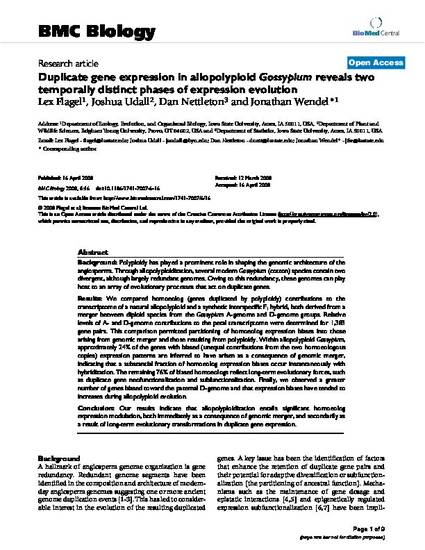
Polyploidy has played a prominent role in shaping the genomic architecture of the angiosperms. Through allopolyploidization, several modern Gossypium (cotton) species contain two divergent, although largely redundant genomes. Owing to this redundancy, these genomes can play host to an array of evolutionary processes that act on duplicate genes. We compared homoeolog (genes duplicated by polyploidy) contributions to the transcriptome of a natural allopolyploid and a synthetic interspecific F1 hybrid, both derived from a merger between diploid species from the Gossypium A-genome and D-genome groups. Relative levels of A- and D-genome contributions to the petal transcriptome were determined for 1,383 gene pairs. This comparison permitted partitioning of homoeolog expression biases into those arising from genomic merger and those resulting from polyploidy. Within allopolyploid Gossypium, approximately 24% of the genes with biased (unequal contributions from the two homoeologous copies) expression patterns are inferred to have arisen as a consequence of genomic merger, indicating that a substantial fraction of homoeolog expression biases occur instantaneously with hybridization. The remaining 76% of biased homoeologs reflect long-term evolutionary forces, such as duplicate gene neofunctionalization and subfunctionalization. Finally, we observed a greater number of genes biased toward the paternal D-genome and that expression biases have tended to increases during allopolyploid evolution. Our results indicate that allopolyploidization entails significant homoeolog expression modulation, both immediately as a consequence of genomic merger, and secondarily as a result of long-term evolutionary transformations in duplicate gene expression.
Available at: http://works.bepress.com/dan-nettleton/12/

This article is from BMC Biology 6 (2008): 16, doi:10.1186/1741-7007-6-16. Posted with permission.